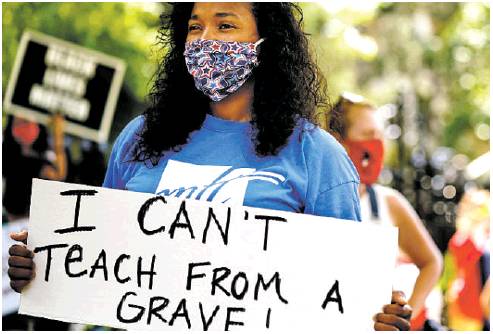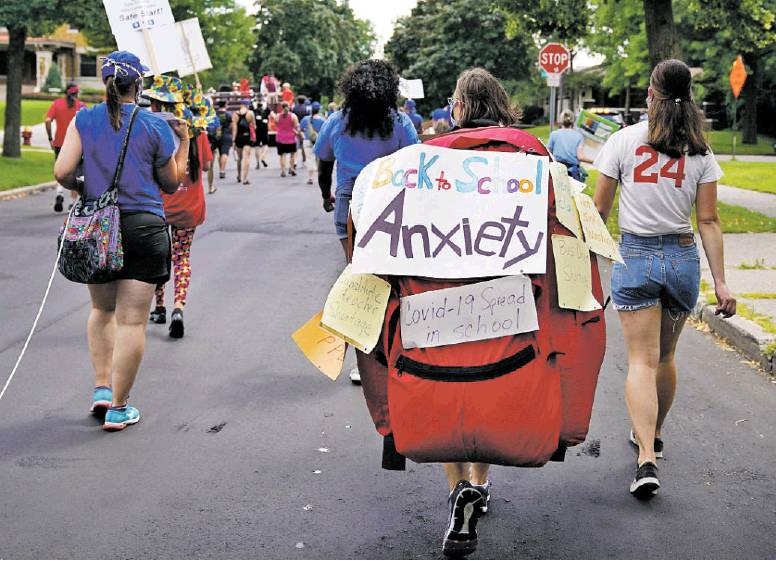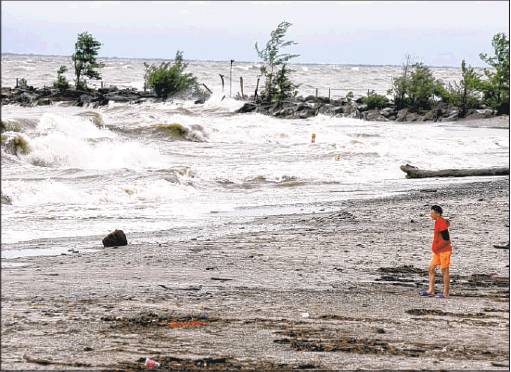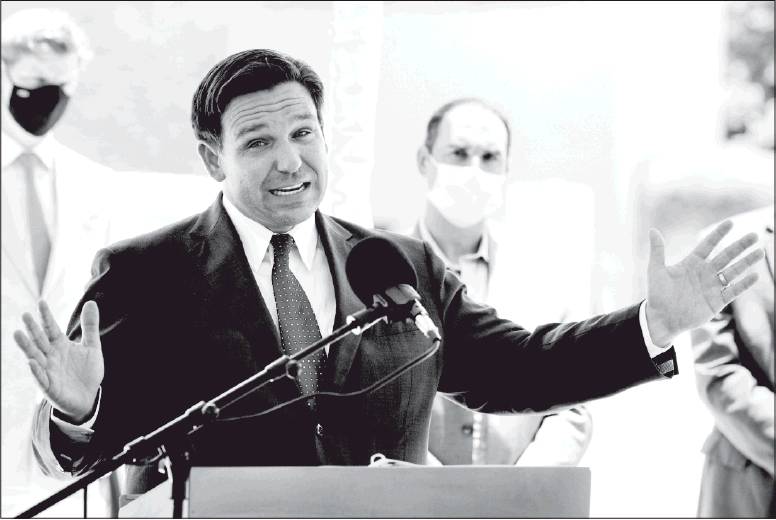CDC calls on schools to reopen despite risks  ANTHONY SOUFFLÉ • [email protected] NOT YET: Lindsey West, who teaches fifth grade at Clara Barton Open School in Minneapolis, protested outside the Governor’s Residence on Friday against reopening too soon. |

WASHINGTON – The nation’s top public health agency issued a full-throated call to reopen schools in a statement that aligned with President Donald Trump’s pressure on communities, listing numerous benefits of being in school and downplaying the potential health risks.
The Centers for Disease Control and Prevention published the statement, along with new “resources and tools,” Thursday evening, two weeks after Trump criticized its earlier recommendations on school reopenings as “very tough and expensive.” His words ratcheted up what was already an anguished national debate over how soon students and teachers should return to classrooms.
“Reopening schools creates opportunity to invest in the education, well-being and future of one of America’s greatest assets — our children — while taking every precaution to protect students, teachers, staff and all their families,” the agency’s statement said.
Trump, pummeled with criticism over his handling of the pandemic, sees reopening the nation’s schools this fall as crucial to reinvigorating the economy and to his reelection. While many public health experts and pediatricians agree that returning children to classrooms is critically important, they warn that it has to be done cautiously, with a plan based on scientific evidence. They, along with teachers unions, have accused the president of putting children and the adults who supervise them at school at risk by politicizing the subject.
The new package of CDC materials began with a statement titled “The Importance of Reopening America’s Schools This Fall” that repeatedly described children as being at low risk for being infected by or transmitting the virus, even though the science on both aspects is far from settled.
The package included checklists for parents, guidance on wearing face coverings, mitigation measures for schools to take and other information that some epidemiologists described as useful. This more technical guidance generally was consistent with the agency’s earlier recommendations , such as keeping desks 6 feet apart and keeping smaller-than-usual groups of children in one classroom all day instead of allowing them to move around.
The guidance suggests schools take measures such as keeping students in small cohorts, having one teacher stay with the same group all day and using outdoor spaces. It also suggests planning for how to handle when someone in a school tests positive, including developing plans for contact tracing. It also includes strategies to support students of various ages wearing masks. For parents, it suggests checking their children each morning for signs of illness before sending them to school and talking to them about preventive measures.
While most research suggests that children infected by the coronavirus are at low risk of becoming severely ill or dying, how often they become infected and how efficiently they spread the virus to others is not definitively known. Children in middle and high schools may also be at much higher risk of both than those under 10, according to some recent studies, a distinction the CDC statement did not make.
In a call with reporters Friday, CDC director Dr. Robert Redfield said that he understood the “trepidation” many parents and teachers were feeling and that decisions should be made based on levels of infection in each community.
Still, he said, “The goal line is to get the majority of these students back to face-to-face learning.”
One school that will not fully reopen in September is St. Andrew’s Episcopal School, a private school in Washington’s Maryland suburbs attended by Trump’s son. The school said in a letter to parents that it was still deciding whether to adopt a hybrid model for the fall that would allow limited in-person education or to resume holding all classes online .
At a briefing Wednesday, Trump expressed no qualms about Barron or his school-age grandchildren returning to class. “I am comfortable with that,” he said.
The White House had no comment Thursday on the decision by St. Andrew’s, but at a briefing later in the day, Trump seemed more flexible in demanding reopenings . In areas with surging infections, he said, reading from a script, “districts may need to delay reopening for a few weeks.”
But he emphasized the need to reopen quickly. “We cannot indefinitely stop 50 million American children from going to school, harming their mental, physical and emotional development,” he said. “Reopening our schools is also critical to ensuring that parents can go to work and provide for their families.”
“The goal line is to get the majority of these students back to face-to-face learning.” Dr. Robert Redfield, CDC director





 RSS Feed
RSS Feed